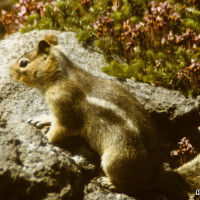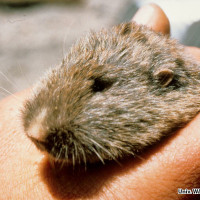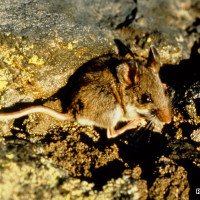How were small mammals affected by the eruption?
Of the 32 species of small mammals thought to be living near Mount St. Helens only 14 were known to have survived. The eruption adversely affected small mammals either directly through immediate injury or death or indirectly by reducing the availability of food, water or hiding cover. Small mammals that live beneath the soil surface such as the northern pocket gopher (Thomomys talpoides) or hibernators such as the Pacific jumping mouse (Zappus trinotatus) survived where other surface dwelling or non-hibernating animals perished. Species that have returned to the blast zone tend to be generalists having few specific habitat requirements and a broad food base (deer mouse, Peromyscus maniculatus and golden-mantled ground squirrel, Spermophilus saturatus). Species with narrower requirements will probably not return until forest vegetation recovers and food and hiding cover are abundant.
- Ground squirrels are thriving despite the negative effects of being overfed by visitors.
- Northern pocket gophers survived the eruption in their underground burrows.
- Generalist species like the deer mouse thrived because they were able to feed on a wide variety of food sources.





